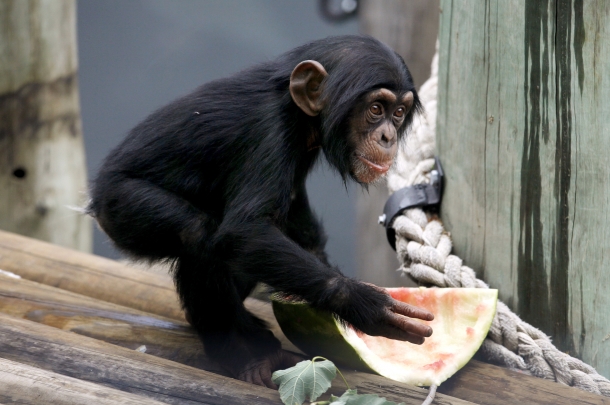
Psychologists from the University of California have discovered human, bonobo and chimpanzee babies display similar gestures when communicating.
Researchers studied video of the three individuals as they grew up, paying close attention to the facial expressions and gestures each made when they wanted to be fed, picked up and so on. The team used home video of a human girl from 11 months old to 18 months and footage of the female apes from about 12 months old to 26 months.
Like Us on Facebook
Studying gestures made when each wanted to be picked up, the researchers observed that the three similarly pointed their fingers and raised their arms.
"The similarity in the form and function of the gestures in a human infant, a baby chimpanzee and a baby bonobo was remarkable," said Patricia Greenfield, a Distinguished Professor of Psychology at UCLA and co-author of the study.
The findings suggest "gesture plays an important role in the evolution of language, because it preceded language use across the species," said study co-author Kristen Gillespie-Lynch, a developmental psychologist at the College of Staten Island in New York.
The bonobo and chimpanzee used in the study grew up together at at the Language Research Center in Atlanta, where they used gestures and lexigrams (visual symbols like geometric shapes) to communicate with their human caretakers.
"Lexigrams were learned, as human language is, during meaningful social interactions, not from behavioral training," said the study's lead author, Kristen Gillespie-Lynch, an Assistant Professor of Psychology at the City University of New York.
While all three species used gestures to develop symbolic skills, the human girl was shown to gesture with human vocalizations, while the apes made no noise.
"This finding suggests that the ability to combine gesture and vocalization may have been important for the evolution of language," Greenfield said in a news release.
Chimpanzees and bonobos are closely related to humans on the evolutionary tree.
The study was published on June 6 in the journal Frontiers in Comparative Psychology.
(Source)
Open all references in tabs: [1 - 4]
